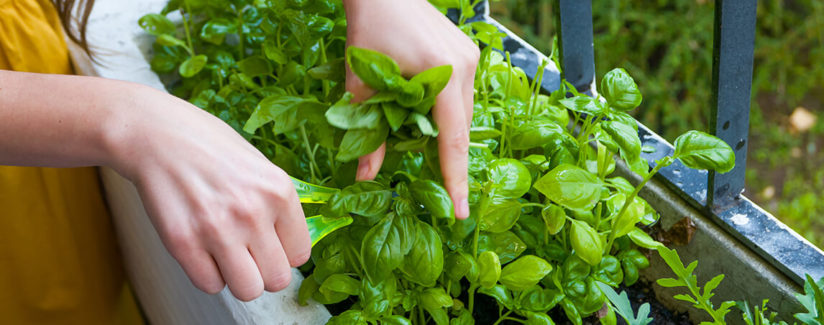
Growing Your Own Vegetables in Small Spaces
Growing your own vegetables doesn’t have to take up a big spot in your back yard. You can plant, nurture and harvest vegetables to feed your family in containers on the back patio, front porch or even in your window sill. We reached out to Jen Haugen, a mom, gardening enthusiast and registered dietitian nutritionist, to learn more about container gardening.
“Container gardening is a great way to start gardening if you have never done it before,” Haugen said. “It’s great when you don’t have a great space or you just want to do something and are not willing to dig into the yard. Get the right container that’s big enough, try a couple vegetables and see what you think.”
Haugen tells us that vegetables you grow on your own are nutritionally the same as those you purchase in the store or farmers market. She explains that there are multiple benefits to growing your own vegetables.
“The benefits for gardening in general are not only related to the health benefits of easy access to fruits and vegetables you are growing, but also your mental health,” Haugen said. “It’s a great way to connect with your family. Everybody is learning and everybody is working together. The garden kind of teaches you that it’s okay to slow down and nourish the things you want to grow and pull the weeds out of your life. We tend to it, we grow it, we are able to harvest it and prepare it as a family.”
Haugen tells us that you can grow many kinds vegetables in a container, but it’s important to think about how the vegetable grows first. She encourages gardeners to start root vegetables (such as carrots, radishes or potatoes) from a seed in the container. Other vegetables (such as tomatoes or peppers) will grow better by transplanting a seedling into the container.
“All of your root vegetables you would want to start from seed in the container because disrupting the growth of a root vegetable can be detrimental,” Haugen said. “For example, a carrot is securing itself into the soil to allow for the growth of a straight carrot. If you remove that, you could get some really funky looking carrots because the structure has been disrupted.”
Choosing the right container for the type of plant you want to grow is important to a plentiful container garden.
“You want to match the container to whatever you are growing,” Haugen said. “If you are planting something that will grow above ground, like lettuce or tomatoes, you need to match up the size with the container. Tomatoes can get very large. Lettuce is not super large, but it needs a little extra space. If you’re thinking about planting vegetables that grow beneath the ground, you need to also have the depth.”
If you go to the store, you will find many kinds of containers in the garden section – clay, plastic, ceramic, wooden. So how do you know what to choose? Haugen says that the type of container you choose can affect how quickly the soil dries out.
“If you choose clay pots, they can work well, but you have to remember they are porous,” Haugen said. “They tend to dry out really, really fast, especially in really hot weather. Ceramic, glazed pots will actually hold a little bit better moisture because they are not porous.”
Haugen also tells us to be sure the container has great drainage. It should at least have one big hole or several smaller holes on the bottom, otherwise nothing will grow well.
“The key to container gardening is really, really good watering, consistency, ensuring there is really good drainage and making sure the pot is big enough for whatever you want to grow,” Haugen said.
Haugen also tells us that vegetables you grow on your own are nutritionally the same as those you purchase in the store or farmers market. She explains that there are multiple benefits to growing your own vegetables.
“The benefits for gardening in general are not only related to the health benefits of easy access to fruits and vegetables you are growing, but also your mental health,” Haugen said. “It’s a great way to connect with your family. Everybody is learning and everybody is working together. The garden kind of teaches you that it’s okay to slow down and nourish the things you want to grow and pull the weeds out of your life. We tend to it, we grow it, we are able to harvest it and prepare it as a family.”
With a proper container, good soil, tiny seed, adequate watering and sunlight, plus a little family time, you can be growing your own vegetables in whatever space you have available. That’s the great thing about container gardening – it’s an accessible way to produce your own food, on a large or small scale.
Check out our Pinterest board filled with multiple tips for growing your own vegetables in containers!


























